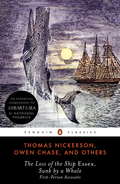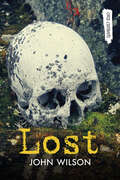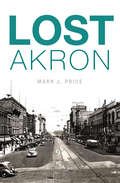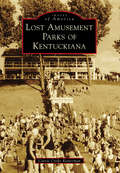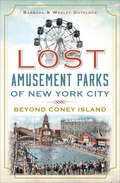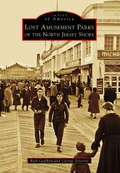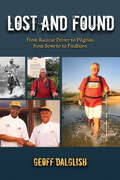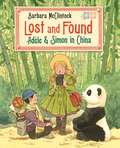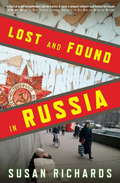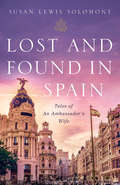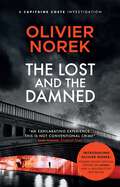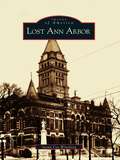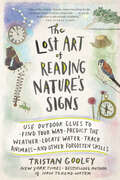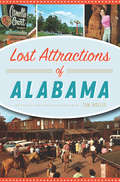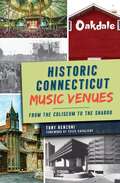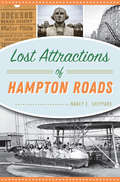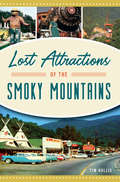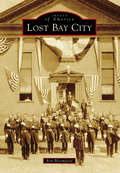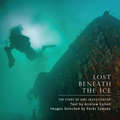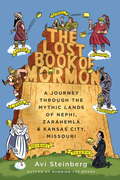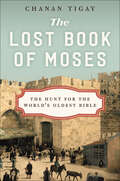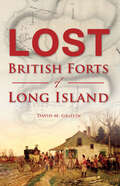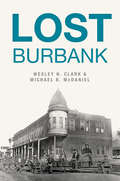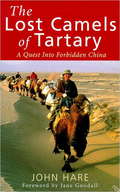- Table View
- List View
The Loss Of The Ship Essex, Sunk By A Whale
by Thomas Nickerson Owen Chase Nathaniel Philbrick Thomas PhilbrickThe gripping first-hand narrative of the whaling ship disaster that inspired Melville’s Moby-Dick and informed Nathaniel Philbrick’s monumental history, In the Heart of the Sea. In 1820, the Nantucket whaleship Essex was rammed by an angry sperm whale thousands of miles from home in the South Pacific. The Essex sank, leaving twenty crew members drifting in three small open boats for ninety days. Through drastic measures, eight men survived to reveal this astonishing tale. The Narrative of the Wreck of the Whaleship Essex, by Owen Chase, has long been the essential account of the Essex’s doomed voyage. But in 1980, a new account of the disaster was discovered, penned late in life by Thomas Nickerson, who had been the fifteen-year-old cabin boy of the ship. This discovery has vastly expanded and clarified the history of an event as grandiose in its time as the Titanic. This edition presents Nickerson’s never-before-published chronicle alongside Chase’s version. Also included are the most important other contemporary accounts of the incident, Melville’s notes in his copy of the Chase narrative, and journal entries by Emerson and Thoreau. .
Lost: Books V And Vi (Orca Currents)
by John WilsonIn this high-interest novel for young readers, teen sleuths Sam and Annabel solve a mystery in the Arctic that has ties to the Franklin Expedition.
Lost Akron (Lost)
by Mark J. PriceFrom a prehistoric locale like the Big Falls of the Cuyahoga River to the cavernous 1970s majesty of the Coliseum, explore the places that have melted away in Akron's changing landscape. Remember M. O'Neil Company? Akron Times-Press? The North Hill Viaduct? WAKR-TV? Norka Soda? Rolling Acres Mall? These are icons that all defined the city and its people. For those who live in Akron, for those who have moved away and for those too young to remember the Rubber City's heyday, author Mark J. Price takes a fascinating look at fifty vanished landmarks from Akron's past.
Lost Amusement Parks of Kentuckiana (Images of America)
by Carrie Cooke KettermanThe banks of the Ohio River, where picnic grounds flourished and steamboat travel was abundant, provided an ideal location for amusement parks to thrive in Kentuckiana, a term used to describe the Louisville and southern Indiana area. Popular amusement parks such as Glenwood Park, Rose Island, White City, Fontaine Ferry, and Kiddieland welcomed visitors as early as 1902, and the more successful parks continued to operate well into the 1960s. Visitors to these parks enjoyed steamboat excursions, live music, rides, games, picnics, sporting events, and more. These parks were not only for amusement seekers but also for keen businessmen like David Rose, who purchased Fern Grove in 1923 and renamed the park Rose Island. Transportation businesses thrived, with steamboats like the Idlewild (now the Belle of Louisville) providing regular transportation to the parks along the Ohio River. In addition to an increase in river traffic, companies like the New Albany Traction Company purchased the area that would become Glenwood Park from the well-known Beharrel family, of New Albany, Indiana, and provided rail transportation to their park.
Lost Amusement Parks of New York City: Beyond Coney Island (Lost Ser.)
by Barbara Gottlock Wesley GottlockA historical tour of fun and frolic in the five boroughs—including photos from the good old days. Coney Island is an iconic symbol of turn-of-the-century New York—but many other amusement parks have thrilled the residents of the five boroughs. Strategically placed at the end of trolley lines, railways, public beaches, and waterways, these playgrounds for the rich and poor alike first appeared in 1767. From humble beginnings, they developed into huge sites like Fort George, Manhattan&’s massive amusement complex. Each park was influenced by the culture and eclectic tastes of its owners and patrons—from the wooden coasters at Staten Island&’s Midland Beach to beer gardens on Queens&’ North Beach and fireworks blasting from the Bronx&’s Starlight Park. As real estate became more valuable, these parks disappeared. With this historical tour, you can rediscover the thrills of the past from the lost amusement parks of New York City.
Lost Amusement Parks of the North Jersey Shore (Images of America)
by George Severini Rick GeffkenThe Jersey Shore has always attracted people seeking relief from summer heat and humidity. Long before Europeans came here, the native Lenape clammed, fished, and played games on the beach and in the surf. These original people could scarcely have imagined that, by the end of the 19th century, the 120-mile-long coastline of New Jersey would be dotted with amusement parks featuring gentle kiddie car rides, terrifying roller coasters, merry-go-rounds, and fast-food emporiums. James Bradley in Asbury Park and William Sandlass Jr. in Highland Beach created mass entertainment for hundreds of thousands of people. Their seaside recreation centers, along with those in Long Branch, Bradley Beach, Pleasure Bay, and others, endured for years but are just fond and fading memories today.
Lost and Found
by Geoff DalglishTackling the goal to walk 25,000 miles -the equivalent of the circumference of the planet - one man shares life-changing insights through his personal travel vignettes. Formerly a thrill-seeking journalist, Geoff Dalglish begins his impressive expedition after undergoing a spiritual and ecological awakening at the Findhorn center in Scotland. His deliberate journey from Timbuktu to Antarctica to Hollywood unfolds in vivid and inspiring detail, revealing a wealth of unimaginable experiences while sharing a message about treading lightly on the Earth. From the horrors of bloody civil unrest and death-defying moments at the hands of armed guerilla soldiers to close encounters with the animal kingdom and finding healing balm within spiritual communities, this roller coaster of adventure chronicles a deeper quest for meaning that culminates in the joys of a life lived in simplicity and service.
Lost and Found: Adèle & Simon in China (Adele & Simon)
by Barbara McClintockWhen siblings Adèle and Simon visit their uncle in China, he buys them each gifts for their trip. Simon picks out a hat, a flute, a fan, and other small items, while his sister selects a camera to photograph their journey. As soon as they're packed and ready, it's time to set off with Uncle Sydney to explore! In a series of postcards home to their mother, Adèle describes each of the places they visit and the adventures they have... and, of course, what item Simon managed to lose at each stop along the way. On a silk farm in Shanghai, he loses his scarf. Along the Great Wall, his hat blows right off his head. By the end of the trip, Simon has misplaced all of his belongings! But when Adèle develops her photographs, she and her brother discover that they can see each of Simon's lost items in the background of the pictures.Barbara McClintock's meticulous research and intricate pen-and-ink and watercolor illustrations bring this book to life, capturing the essence of each of the culturally and historically significant sites that Adèle and Simon visit. Children will love poring over the pictures to find Simon's lost items, and parents will value the authenticity of the art and story.
Lost and Found in Russia
by Susan RichardsAfter the fall of communism, Russia was in a state of shock. The sudden and dramatic change left many people adrift and uncertain--but also full of a tentative but tenacious hope. Returning again and again to the provincial hinterlands of this rapidly evolving country from 1992 to 2008, Susan Richards struck up some extraordinary friendships with people in the middle of this historical drama. Anna, a questing journalist, struggles to express her passionate spirituality within the rules of the new society. Natasha, a restless spirit, has relocated from Siberia in a bid to escape the demands of her upper-class family and her own mysterious demons. Tatiana and Misha, whose business empire has blossomed from the ashes of the Soviet Union, seem, despite their luxury, uneasy in this new world. Richards watches them grow and change, their fortunes rise and fall, their hopes soar and crash. Through their stories and her own experiences, Susan Richards demonstrates how in Russia, the past and the present cannot be separated. She meets scientists convinced of the existence of UFOs and mind-control warfare. She visits a cult based on working the land and a tiny civilization founded on the practices of traditional Russian Orthodoxy. Gangsters, dreamers, artists, healers, all are wondering in their own ways, "Who are we now if we're not communist? What does it mean to be Russian?" This remarkable history of contemporary Russia holds a mirror up to a forgotten people. Lost and Found in Russia is a magical and unforgettable portrait of a society in transition.
Lost and Found In Spain: Tales of An Ambassador's Wife
by Susan Lewis SolomontWhen her husband was appointed by President Barack Obama to be U.S. Ambassador to Spain and Andorra, Susan Solomont uprooted herself. She left her career, her friends and family, and a life she loved to join her husband for a three-and-a-half-year tour overseas. Part memoir and part travelogue, Solomont learns the rules of a diplomatic household; goes on a culinary adventure with some of Spain's greatest chefs; finds her place in the Madrid Jewish community; and discovers her own voice to create new meaning in her role as a spouse, a community member, and a 21st century woman.
The Lost and the Damned: Sunday Times Crime Book of the Month (Banlieues Trilogy, The)
by Olivier NorekThis impressive debut is slick, sick and not for the faint-hearted. The first 30 pages contain what must be one of the most shocking scenes ever committed to paper. It will make you cry out (for more) - Mark Sanderson, The Times Crime Book of the MonthIntroducing Olivier Norek: Former police officer, writer on Spiral and an award-winning, million-copy bestseller.A corpse that wakes up during the autopsy. A case of spontaneous human combustion. There is little by the way of violent crime that Capitaine Victor Coste has not encountered in his fifteen years policing France's most notorious suburb - but nothing like this. As he struggles to find a link between the cases, he receives a pair of anonymous letters highlighting the fates of two women whose deaths were never explained - two more blurred faces among the ranks of the lost and the damned.Why were their murders not investigated? Coste is not the only one asking that question. Someone out there believes justice is best served on a cold mortuary slab. What readers are saying about The Lost and the DamnedYou can see the similarities with the TV series Spiral, which can only be a major positive!A hard hitting and gritty French crime read that makes an impact.A great thriller, sardonic, humorous, dark.I loved this book. Well written and had an authentic feel to it. A complete page turner.Translated from the French by Nick Caistor
Lost Ann Arbor
by Susan Cee WinebergAnn Arbor might have become just another small Michigan village had it not been for one crucial event: its designation as the home of the University of Michigan in 1837. Its subsequent development into a thriving cultural and intellectual community was marked by its extraordinary architecture, from the grand 1878 courthouse to the exquisite original university buildings and fashionable East Huron Street. The expansion of the town and university, the arrival of the automobile, and frequent fires began atransformation of Ann Arbor that led to the tragic demolition of some of its most remarkable structures. Lost Ann Arbor is a tribute to these long-lost treasures and the 19th century way of life that accompanied them.
The Lost Art of Reading Nature's Signs: Use Outdoor Clues To Find Your Way, Predict The Weather, Locate Water, Track Animals--and Other Forgotten Skills (Natural Navigation #0)
by Tristan GooleyTurn every walk into a game of detection—from master outdoorsman Tristan Gooley, New York Times-bestselling author of How to Read a Tree and The Natural Navigator When writer and navigator Tristan Gooley journeys outside, he sees a natural world filled with clues. The roots of a tree indicate the sun’s direction; the Big Dipper tells the time; a passing butterfly hints at the weather; a sand dune reveals prevailing wind; the scent of cinnamon suggests altitude; a budding flower points south. To help you understand nature as he does, Gooley shares more than 850 tips for forecasting, tracking, and more, gathered from decades spent walking the landscape around his home and around the world. Whether you’re walking in the country or city, along a coastline, or by night, this is the ultimate resource on what the land, sun, moon, stars, plants, animals, and clouds can reveal—if you only know how to look! Publisher’s Note: The Lost Art of Reading Nature’s Signs was previously published in the UK under the title The Walker’s Guide to Outdoor Clues and Signs.
Lost Attractions of Alabama
by Tim HollisAlabama has had an enviable success rate when it comes to tourist attractions, with some that date back to the 1930s still drawing crowds today. But many others have come and gone, sometimes leaving little evidence of their existence. Join Alabama native Tim Hollis as he revisits iconic attractions such as Canyon Land Park and Sequoyah Caverns, the floral clock at Birmingham's Botanical Gardens and the traffic safety torch held aloft by Vulcan, the iron man. Many Gulf Coast attractions are gone, including Styx River Water World and Spooky Golf, but the memories remain.
Lost Attractions of Florida's Miracle Strip (Lost)
by Tim HollisBeginning in the early 1950s, the 130 miles of Florida coastline stretching from Panama City to Pensacola were branded as the Miracle Strip. Between those cities, oddities sprang up: goofy miniature golf courses, neon-bedecked motels, reptile farms and attractions that sought to re-create environments ranging from the South Pacific to the ghost towns of the Old West. In total, it was a marketing effort that worked brilliantly. Tourists flocked to the Strip, and now they can return. Author Tim Hollis presents a colorful array of these now-vanished sights, from the garish Miracle Strip Amusement Park to such oddities as Castle Dracula and the Museum of the Sea and Indian.
Lost Attractions of Hampton Roads (Lost)
by Nancy E. SheppardTake a trip down memory lane to beloved destinations for fun and families across Virginia's tidewater. Cruise the rails of Ocean View Amusement Park's "The Rocket" roller coaster, dig for fossils at Hampton's Rice's Fossil Pit, celebrate the winter season at Portsmouth's Coleman's Nursery and learn the significant role that Buckroe Beach's Bay Shore Beach Park played in American history. From the Great White Fleet to a Wild West park, journey through this vibrant history with author and historian Nancy E. Sheppard and discover whether such cherished places can ever truly be lost.
Lost Attractions of the Smoky Mountains (Lost)
by Tim HollisThe Great Smoky Mountains National Park is among the most visited national parks in the country, and countless attractions around its borders have tried for decades to siphon some of those valuable tourist dollars. From ersatz western towns and concrete dinosaurs to misplaced Florida-type attractions and celebrity theaters, you will find them all preserved in this book. Author Tim Hollis showcases those businesses that no longer exist, from Hill-Billy Village in Pigeon Forge and Gatlinburg's theme parks on the Tennessee side to the motels of Cherokee and Ghost Town in the Sky on the North Carolina side.
Lost Bay City
by Ron BloomfieldWhen the phrase "Do you remember?" is uttered in Bay City, it is usually followed by the name of a hotel, restaurant, business, or building. Slowly, many parts of local history have been lost to the sands of time. Fire took many, followed by condemnations and the inevitable advance of progress. An empty lot may be all that remains of a once-prominent structure, but sometimes a new landmark emerges. In the case of one famous address at Center and Water Streets, the Wenonah Hotel rose out of the ashes of the Fraser House, another prominent facade. Seven decades later, the Wenonah, too, succumbed to fire; out of those ashes rose the Delta College Planetarium, a third-generation landmark. Photographs help residents remember, though each person who experienced something firsthand has his or her own distinct connection with these pieces of lost Bay City.
Lost Beneath the Ice: The Story of HMS Investigator
by Andrew CohenThe story of the bold voyage of HMS Investigator and the modern-day discovery of its wreck by Parks Canada’s underwater archaeologists. When Sir John Franklin disappeared in the Arctic in the 1840s, the British Admiralty launched the largest rescue mission in its history. Among the search vessels was HMS Investigator, which left England in 1850 under the command of Captain Robert McClure. While the ambitious McClure never found Franklin, he and his crew did discover the fabled Northwest Passage. Like Franklin’s ships, though, Investigator disappeared in the most remote, bleak and unknown place on Earth. For three winters, its 66 souls were trapped in the unforgiving ice of Mercy Bay. They suffered cold, darkness, starvation, scurvy, boredom, depression and madness. When they were rescued in 1853, Investigator was abandoned. For more than a century and a half, the ship’s fate remained a mystery. Had it been crushed by the ice or swept out to sea? In 2010, Parks Canada sent a team of archaeologists to Mercy Bay to find out. It was a formidable challenge, demanding expertise and patience. There, off the shores of Aulavik National Park, they found Investigator. Lost Beneath the Ice is a tale of endurance, daring, deceit, courage, and irony. It is a story about a tempestuous crew, their mercurial captain, cynical surgeon and kind-hearted missionary. In the end, McClure found fame but lost his ship, some of his crew and much of his honour. Written with elegance and authority, illustrated with archival imagery and startling underwater photographs of Investigator and its artifacts, this is a sensational story of discovery and intrigue in Canada’s Arctic. Andrew Cohen is a best-selling author and award-winning journalist. Among his books are While Canada Slept, a finalist for the Governor General’s Literary Award, The Unfinished Canadian, and Extraordinary Canadians: Lester B. Pearson. He writes a nationally syndicated column for The Ottawa Citizen and comments regularly on CTV. A professor of journalism and international affairs at Carleton University, he is founding president of the Historica-Dominion Institute. He has twice received Queen’s Jubilee Medals.
The Lost Book of Mormon
by Avi SteinbergIs the Book of Mormon the Great American Novel? Decades before Melville and Twain composed their great works, a farmhand and child seer named Joseph Smith unearthed a long-buried book from a haunted hill in western New York State that told of an epic history of ancient America, a story about a family that fled biblical Jerusalem and took a boat to the New World. Using his prophetic gift, Joseph translated the mysterious book into English and published it under the title The Book of Mormon. The book caused an immediate sensation, sparking anger and violence, boycotts and jealousy, curiosity and wonder, and launched Joseph on a wild, decades-long adventure across the American West. Today The Book of Mormon, one of the most widely circulating works of American literature, continues to cause controversy--which is why most of us know very little about the story it tells. Avi Steinberg wants to change that. A fascinated nonbeliever, Steinberg spent a year and a half on a personal quest, traveling the path laid out by Joseph's epic. Starting in Jerusalem, where The Book of Mormon opens with a bloody murder, Steinberg continued to the ruined Maya cities of Central America--the setting for most of the The Book of Mormon's ancient story--where he gallivanted with a boisterous bus tour of believers exploring Maya archaeological sites for evidence. From there the journey took him to upstate New York, where he participated in the true Book of Mormon musical, the annual Hill Cumorah Pageant. And finally Steinberg arrived at the center of the American continent, Jackson County, Missouri, the spot Smith identified as none other than the site of the Garden of Eden.Threaded through this quirky travelogue is an argument for taking The Book of Mormon seriously as a work of American imagination. Literate and funny, personal and provocative, the genre-bending The Lost Book of Mormon boldly explores our deeply human impulse to write bibles and discovers the abiding power of story.From the Hardcover edition. about us. And also an answer to the question: Why are we so afraid of the Book of Mormon? Literate and funny, personal and provocative, the genre-bending Lost Book of Mormon boldly explores our deeply human impulse to write bibles and discovers the abiding power of story.
The Lost Book of Moses: The Hunt for the World's Oldest Bible
by Chanan TigayOne man’s quest to find the oldest Bible scrolls in the world and uncover the story of the brilliant, doomed antiquarian accused of forging them.In the summer of 1883, Moses Wilhelm Shapira—archaeological treasure hunter and inveterate social climber—showed up unannounced in London claiming to have discovered the oldest copy of the Bible in the world.But before the museum could pony up his £1 million asking price for the scrolls—which discovery called into question the divine authorship of the scriptures—Shapira’s nemesis, the French archaeologist Charles Clermont-Ganneau, denounced the manuscripts, turning the public against him. Distraught over this humiliating public rebuke, Shapira fled to the Netherlands and committed suicide.Then, in 1947 the Dead Sea Scrolls were discovered. Noting the similarities between these and Shapira’s scrolls, scholars made efforts to re-examine Shapira’s case, but it was too late: the primary piece of evidence, the parchment scrolls themselves had mysteriously vanished.Tigay, journalist and son of a renowned Biblical scholar, was galvanized by this peculiar story and this indecipherable man, and became determined to find the scrolls. He sets out on a quest that takes him to Australia, England, Holland, Germany where he meets Shapira’s still aggrieved descendants and Jerusalem where Shapira is still referred to in the present tense as a “Naughty boy”. He wades into museum storerooms, musty English attics, and even the Jordanian gorge where the scrolls were said to have been found all in a tireless effort to uncover the truth about the scrolls and about Shapira, himself.At once historical drama and modern-day mystery, The Lost Book of Moses explores the nineteenth-century disappearance of Shapira’s scrolls and Tigay's globetrotting hunt for the ancient manuscript. As it follows Tigay’s trail to the truth, the book brings to light a flamboyant, romantic, devious, and ultimately tragic personality in a story that vibrates with the suspense of a classic detective tale.
Lost British Forts of Long Island (Lost Ser.)
by David M GriffinAuthor David M. Griffin uncovers the lost history and harrowing stories of Long Island's British forts.When the Revolutionary War broke out and New York City had fallen in 1776, the forces of the king of Great Britain developed a network of forts along the length of Long Island to defend the New York area and create a front to Patriot forces across the Sound in Connecticut. Fort Franklin on Lloyd's Neck became a refugee camp for Loyalists and saw frequent rebel attacks. In Huntington, a sacred burial ground was desecrated, and Fort Golgotha was erected in its place, using tombstones as baking hearths. In Setauket along the northern shore, the Presbyterian church was commandeered and made the central fortified structure of the town.
Lost Burbank (Lost)
by Wesley H. Clark Michael B. McdanielSlowly fading with the city's ever-changing landscape, the places and people of Burbank's past tell a vibrant story. Before the arrival of Warner Bros. and Walt Disney, First National Pictures built its original studio lot on Olive Avenue in 1926. For over sixty years, Lockheed Aircraft Company produced some of the nation's best airplanes where the massive Empire Shopping Center now stands. Heavyweight champion James Jeffries turned his Burbank ranch home and barn into a beloved landmark and boxing venue. And inventor Joseph Wesley Fawkes's scheme to build a monorail to Los Angeles became a local laughingstock. Die-hard Burbankers Wes Clark and Michael McDaniel collect these and many more forgotten local stories where they can finally be found.
The Lost Camels Of Tartary: A Quest into Forbidden China
by John HareJohn Hare has made three expeditions to the Mongolian and Chinese Gobi deserts, the first in 1993 with Russian scientists and the second and third with Chinese scientists in 1995 and 1996. The book records the amazing adventures he has experienced on those expeditions and will record details of the 30-day walk on foot in the formidable Kum Tagh sand dunes in the spring of 1997. He is the first recorded foreigner to have crossed the Gashun Gobi from north to south. The expeditions were primarily concerned with tracking down the mysterious wild Bactrian camel 'camelus bactrianus ferus' which lives in the heartland of the desert and is the ancestor of all domestic Bactrian stock. There are under a thousand left in the world and the wild Bactrian camel is more endangered than the giant Panda. This is John Hare's magnificent account of a formidable feat of modern exploration.
The Lost Camels Of Tartary: A Quest into Forbidden China
by John HareJohn Hare has made three expeditions to the Mongolian and Chinese Gobi deserts, the first in 1993 with Russian scientists and the second and third with Chinese scientists in 1995 and 1996. The book records the amazing adventures he has experienced on those expeditions and will record details of the 30-day walk on foot in the formidable Kum Tagh sand dunes in the spring of 1997. He is the first recorded foreigner to have crossed the Gashun Gobi from north to south. The expeditions were primarily concerned with tracking down the mysterious wild Bactrian camel 'camelus bactrianus ferus' which lives in the heartland of the desert and is the ancestor of all domestic Bactrian stock. There are under a thousand left in the world and the wild Bactrian camel is more endangered than the giant Panda. This is John Hare's magnificent account of a formidable feat of modern exploration.
